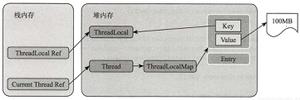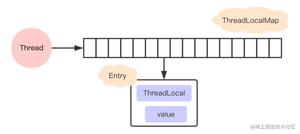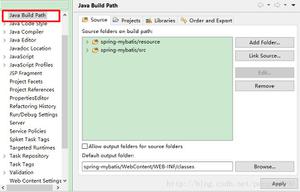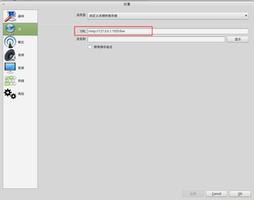ThreadLocal内部机制及使用方法

1.ThreadLocal是单线程内共享资源,多线程间无法共享(即线程A访问不了线程B中ThreadLocal存放的值);
2.ThreadLocal是本地变量,无法跨jvm传递;
3.ThreadLocal的出现可以减少通过参数来传递(使代码更加简洁,降低耦合性),Hibernate中的OpenSessionInView,就始终保证当前线程只有一个在使用中的Connection(或Hibernate Session),代码如下:
1publicclass ConnectionManager { 23/** 线程内共享Connection,ThreadLocal通常是全局的,支持泛型 */
4privatestatic ThreadLocal<Connection> threadLocal = new ThreadLocal<Connection>();
5
6publicstatic Connection getCurrConnection() {
7// 获取当前线程内共享的Connection
8 Connection conn = threadLocal.get();
9try {
10// 判断连接是否可用
11if(conn == null || conn.isClosed()) {
12// 创建新的Connection赋值给conn(略)
13// 保存Connection
14 threadLocal.set(conn);
15 }
16 } catch (SQLException e) {
17// 异常处理
18 }
19return conn;
20 }
21
22/**
23 * 关闭当前数据库连接
24*/
25publicstaticvoid close() {
26// 获取当前线程内共享的Connection
27 Connection conn = threadLocal.get();
28try {
29// 判断是否已经关闭
30if(conn != null && !conn.isClosed()) {
31// 关闭资源
32 conn.close();
33// 移除Connection
34 threadLocal.remove();
35 conn = null;
36 }
37 } catch (SQLException e) {
38// 异常处理
39 }
40 }
41 }
二、ThreadLocal的内部方法
1.protected T initialValue()
①该方法实现只返回 null,并且修饰符为protected,很明显,如果用户想返回初始值不为null,则需要定义线程变量时重写该方法;
1/**2 * @return the initial value for this thread-local
3*/
4protected T initialValue() {
5returnnull;
6 }
1//定义ThreadLocal时重写initialValue方法,返回用户想要的值2privatestatic ThreadLocal t = new ThreadLocal() {
3public Object initialValue() {
4 A a = new A();
5return a;
6 }
7 };
②返回此线程局部变量的当前线程的初始值。最多在每次访问线程来获得每个线程局部变量时调用此方法一次,即线程第一次使用 get() 方法访问变量的时候。如果线程先于 get 方法调用 set(T) 方法,则不会在线程中再调用 initialValue 方法。
1/**2 * Returns the value in the current thread"s copy of this
3 * thread-local variable. If the variable has no value for the
4 * current thread, it is first initialized to the value returned
5 * by an invocation of the {@link #initialValue} method.
6 *
7 * @return the current thread"s value of this thread-local
8*/
9public T get() {
10 Thread t = Thread.currentThread();
11 ThreadLocalMap map = getMap(t);
12if (map != null) {
13 ThreadLocalMap.Entry e = map.getEntry(this);
14if (e != null)
15return (T)e.value;
16 }
17return setInitialValue();
18 }
2.public T get()
①在1中已经提到,该方法返回当前线程变量副本。如果这是线程第一次调用该方法,则创建并初始化此副本。
3.public void set(T value)
①ThreadLocal中有个内部静态类ThreadLocalMap,用来存放当前线程变量副本中的值,键为当前线程变量对象,值为用户设的值;
②当使用ThreadLocal存值时,首先是获取到当前线程对象,然后获取到当前线程本地变量Map,最后将当前使用的ThreadLocal和传入的值放到Map中,也就是说ThreadLocalMap中存的值是[ThreadLocal对象, 存放的值],这样做的好处是,每个线程都对应一个本地变量的Map,所以一个线程可以存在多个线程本地变量(即不同的ThreadLocal,就如1中所说,可以重写initialValue,返回不同类型的子类)。
1/**2 * Sets the current thread"s copy of this thread-local variable
3 * to the specified value. Most subclasses will have no need to
4 * override this method, relying solely on the {@link #initialValue}
5 * method to set the values of thread-locals.
6 *
7 * @param value the value to be stored in the current thread"s copy of
8 * this thread-local.
9*/
10publicvoid set(T value) {
11 Thread t = Thread.currentThread();
12 ThreadLocalMap map = getMap(t);
13if (map != null)
14 map.set(this, value);
15else
16 createMap(t, value);
17 }
4.public void remove()
①移除此线程中某个ThreadLocal的值,目的是为了减少内存的占用。如果再次访问此线程局部变量,那么在默认情况下它将拥有其initialValue;
②只有从jdk1.5开始才有该方法;
③当线程结束后,对应该线程的局部变量将自动被垃圾回收,因此显式调用remove清除线程的局部变量并不是必须的操作,但它可以加快内存回收的速度。
1/**2 * Removes the current thread"s value for this thread-local
3 * variable. If this thread-local variable is subsequently
4 * {@linkplain #get read} by the current thread, its value will be
5 * reinitialized by invoking its {@link #initialValue} method,
6 * unless its value is {@linkplain #set set} by the current thread
7 * in the interim. This may result in multiple invocations of the
8 * <tt>initialValue</tt> method in the current thread.
9 *
10 * @since 1.5
11*/
12publicvoid remove() {
13 ThreadLocalMap m = getMap(Thread.currentThread());
14if (m != null)
15 m.remove(this);
16 }
三、ThreadLocal和同步机制synchonzied相比
1.synchonzied同步机制是为了实现同步多线程对相同资源的并发访问控制。同步的主要目的是保证多线程间的数据共享。同步会带来巨大的性能开销,所以同步操作应该是细粒度的(对象中的不同元素使用不同的锁,而不是整个对象一个锁)。如果同步使用得当,带来的性能开销是微不足道的。使用同步真正的风险是复杂性和可能破坏资源安全,而不是性能。
2.ThreadLocal以空间换取时间,提供了一种非常简便的多线程实现方式。因为多个线程并发访问无需进行等待,所以使用ThreadLocal会获得更大的性能。
3.ThreadLocal中的对象,通常都是比较小的对象。另外使用ThreadLocal不能使用原子类型,只能使用Object类型。ThreadLocal的使用比synchronized要简单得多。
4.synchronized是利用锁的机制,使变量或代码块在某一时该只能被一个线程访问。而ThreadLocal为每一个线程都提供了变量的副本,使得每个线程在某一时间访问到的并不是同一个对象,这样就隔离了多个线程对数据的数据共享。而Synchronized却正好相反,它用于在多个线程间通信时能够获得数据共享。
5.Synchronized用于线程间的数据共享,而ThreadLocal则用于线程间的数据隔离。
以上是 ThreadLocal内部机制及使用方法 的全部内容, 来源链接: utcz.com/z/515930.html









